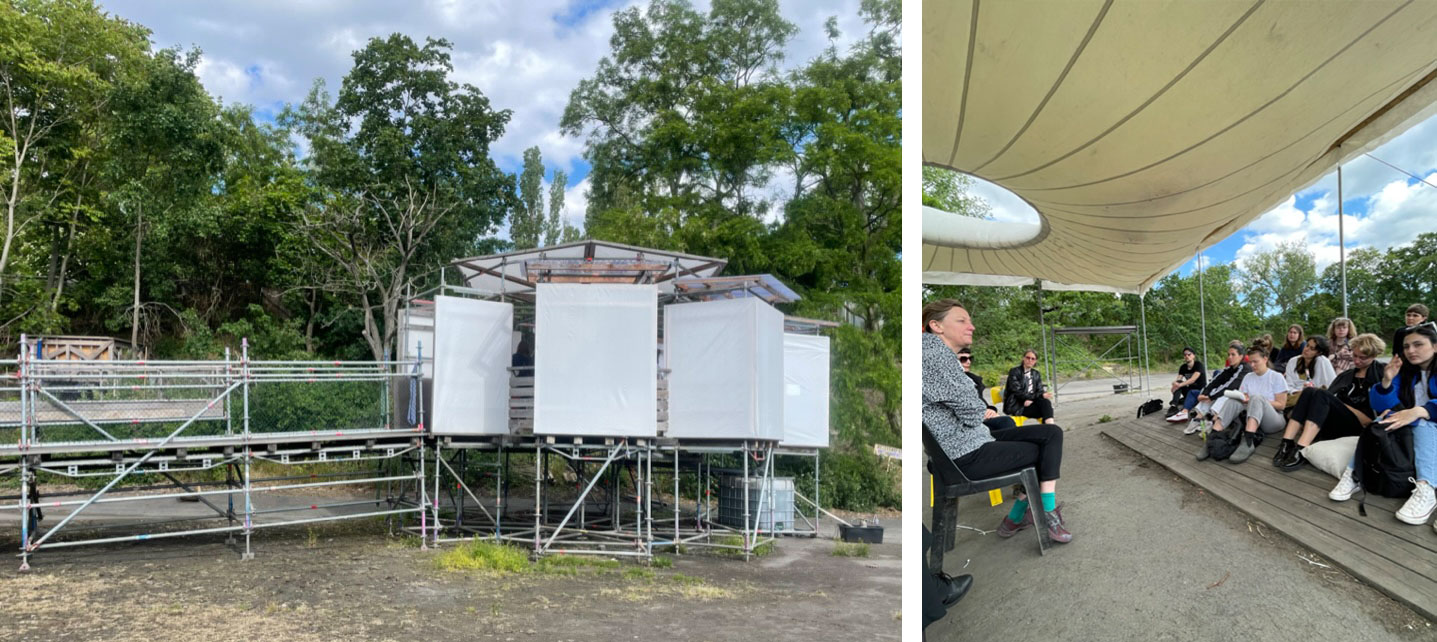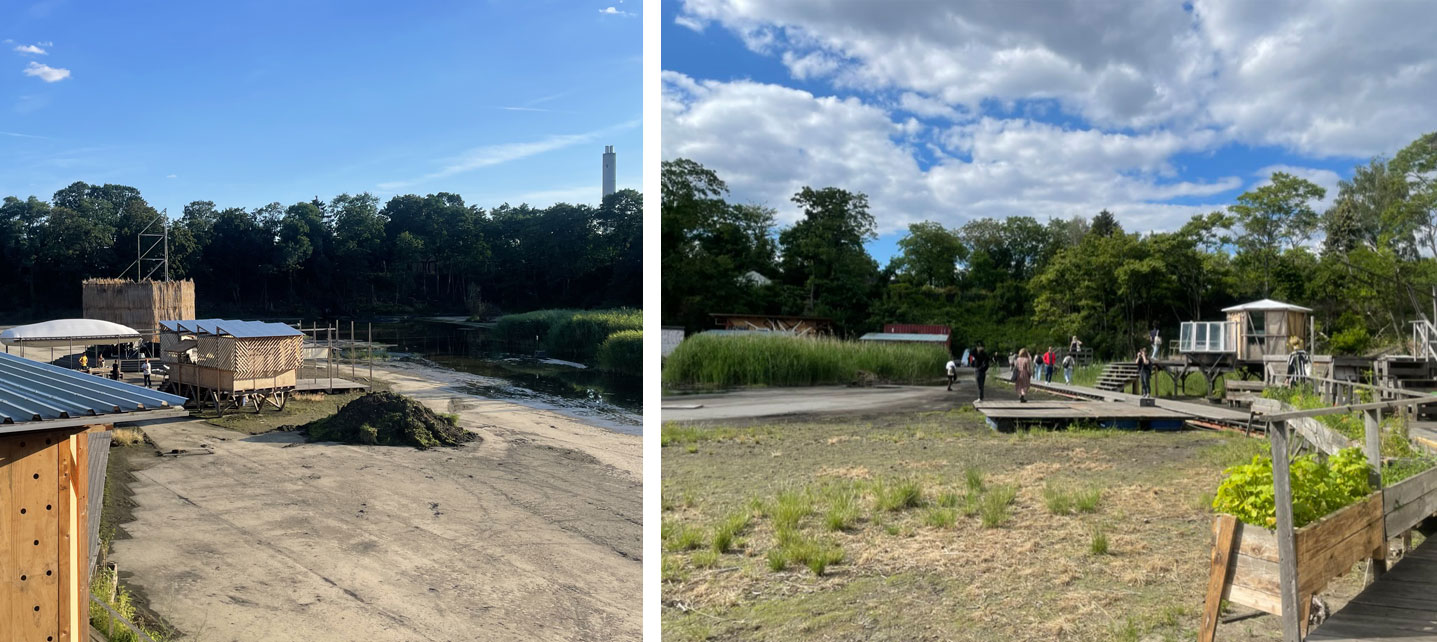Tour with Rosario Talevi
Floating University
The field school students were invited to engage in an exciting, unique space called Floating University, both a place and a concept. The concept behind Floating University is to free oneself from the confines and institutionalization ways of thinking about particular concerns, concepts, and overall way of navigating life, yet, still seeing its architectural and structural foundation as a form of agency. Multifaceted experiences encouraged at Floating University invite an individual's unique perspective in a shared place of learning. There is then no infrastructure in which people participate in, rather, they expand their interpretation of place, space, idea, and vision for greater understanding. Floating University views “shared experience” as “a set of highly individualized viewpoints” (Floating Berlin). Coming out of an extensive period of isolation and limitation in common places during the Pandemic, the students found a space like Floating University to be quite fascinating and a limitless place not only in its values but its lack of infrastructure. They began to reflect retrospectively at what resources I have or have not encountered in the city of Vancouver that were similar to Floating.
Read here more of the history of Floating University: "The site was designed in the early 1930s as a rainwater retention basin to serve the Tempelhof airfield and adjacent avenues, and it was encased in concrete after the second World War by the U.S Army. Today, it remains as a fully functioning public infrastructure: it holds and diverts rainwater into the city’s canalisation system. It is also surrounded by a “Gartenkolonie”—an allotment or community garden—and is therefore almost invisible to passers-by.
After the Tempelhof airport closed in 2008, the city’s redevelopment plan proposed to build over the airfield and to relocate the neighbouring rainwater infrastructure. This would have transformed the 22.500 m2 city-owned piece of land occupied by the basin into a valuable, profitable asset for Berlin’s real estate portfolio. However, in the Tempelhof referendum of 2014, Berliners voted against the city and prevented any kind of construction on the airfield. The result of this referendum not only protected the unique inner-city green space, but also provided protection for the basin....."
The tour with the students was guided by Berlin-based architect Rosario Talevi who is greatly interested in the spatial, curatorial practices and reframed pedagogies. Talevi emphasized the importance of hybridization at Floating University, focusing our interactions as people through coexistence, cohabitation, and collaboration; this extends to how we exist in other places outside the institution.

According to Talevi, water plays a huge role at the Floating University as it exists as a source of life for all living organisms. For example, the water surrounding the infrastructure is an important place for frogs to mate. Talevi also noted that part of the narrative and the significance of water at Floating is what we do with rain water and recycled water for reuse. The Floating University ultimately acts as a canvas to project political ideas and advocate for certain change in the city and around the world. There is an importance on listening to the site itself and tracing things from nature. The site becomes part of the grid yet resistant to it in many ways. One of the students had asked how the architecture changes and what materials are used to makeup the site at Floating: scaffolding, scrape wood, real wood, the afterlife of various projects, reusing or rescuing materials. All these materials leave the site as a central vessel at all times and allows entities of other natures to take space and interact with the materials at Floating, thus, adding to the change in architecture overtime. For more information, check out Floating University’s website: Floating University Berlin.
